Whether to stay comfortable at home or to wear on special occasions, the traditional japanese kimono is a true jewel that is part of the history of the Land of the Rising Sun.
Often worn during official ceremonies, the kimono is truly the pride of the Japanese people, it is a symbol of Japanese culture which will allow you to adopt a classy and elegant look in all circumstances. Equipped with long, very loose sleeves (furisode), it will cross on the front side then remain closed with an obi belt.
As you can imagine, we could talk about women's kimonos a you men's kimonos for hours, so let's start at the beginning with first its history, where it comes from, etc...
THE HISTORY OF THE JAPANESE KIMONO
The Japanese kimono is one of Japan's most iconic and oldest garments. It has been worn by generations of Japanese for formal events but also informal and it obviously continues to be a strong symbol of Japanese culture and tradition.
The history of the kimono dates back more than 1,000 years, it was initially inspired by China, it was initially a kind of underwear called kosode under the Nara era, it was only during the Heian period that the Japanese began to deviate from the Chinese model and create their own style. The real rise of this typical Japanese clothing will take place only at the time of the Muromachi period, the weaving techniques are improving and it is during this period that the kimono will begin to be worn outdoors.
At first, the kimono was a simple garment made of cotton or flax, used mainly by farmers and workers. Over time, the kimono evolved into a more elaborate garment, made with more luxurious materials such as silk, and adorned with decorations as well as traditional patterns such as: the Japanese crane, the koi carp, the dragon, the Japanese cherry blossoms, etc... Over the centuries, the kimono has become an important element of social and cultural life in Japan, it was notably worn for weddings, funerals, religious ceremonies and state ceremonies. Women often wore colorful kimonos and decorated for special occasions, while men tended to wear kimono envelopes for formal occasions.
The kimono also played an important role in the daily life of the Japanese, in fact, women wore kimonos for household chores while men wore kimonos for professional activities, finally, children had the opportunity to wear kimonos to go to school. As you will have understood, the kimono was a totally versatile garment that could be worn for many different occasions.
Over time, the kimono has also been influenced by fashion trends. During the 1700s and 1800s, the Japanese adopted new trends from Western fashion, including the wearing of shorter, more fitted clothing, however, the tradition of the kimono persisted, it remained an important part of life cultural and social in Japan and today finds itself at the center of traditional Japanese fashion. The kimono is also often worn by tourists as a way to immerse themselves in Japanese culture, it has also become a popular fashion item in many other countries due to its beauty and rich history.
To conclude this point on the history of this Japanese clothing exceptional, we can say that the Japanese kimono is clearly one of the oldest garments and in any case the most important garment in Japan. It has evolved over the centuries to become a symbol of Japanese culture and tradition and it continues to be an important element of social and cultural life in Japan, it will undoubtedly remain an important element of Japanese cultural life for generations to come.

WHAT IS A KIMONO?
But then what is a kimono?
A kimono is a japanese traditional dress usually made from silk or cotton as we saw just before. The Japanese kimono has long, wide sleeves (called "furisode") and is worn with an obi belt which serves to keep the garment closed, given that it is made up of two parts that fold forward, it is also made up of a collar and a standing, the latter is a piece of fabric located below the collar. The designs and colors vary depending on age, gender and the occasion for which they are worn, as tradition dictates, the process of making a kimono is quite long and requires a lot of know-how, it This is also why the cost of a kimono is generally quite high, remember that it is a high-end traditional garment which was initially worn by nobles.
Literally "Kiru" means "to carry" and "mono" means "thing", so its name means "thing we wear", the T shape of this garment gives it elegance and class, it is customary to wear it with traditional shoes like the Japanese geta.

WHAT IS THE DIFFERENCE BETWEEN A KIMONO AND A YUKATA?
It is very common to confuse the kimono and the yukata, however they are two very distinct garments and we will try to explain to you what the differences are between these two traditional Japanese clothing !
Firstly, what differentiates a kimono and one yukata are the occasions for which they will be worn. Although they have physical similarities such as their T shape or the fact that their front side folds down to be closed using a ceinture obi, they will be used for different events. Secondly, we will also see that the materials that make up these two Japanese clothes are not the same from one model to another.
The kimono is a high-end Japanese clothing, it is worn for formal occasions such as weddings, baptisms or even birthdays, it is generally worn over a t-shirt but can also be worn directly over underwear. Usually, the materials that make up a kimono are mainly cotton and/or silk, unlike yukatas, kimonos are rather "thick" and warm.
The yukata is a traditional Japanese clothing lighter which is often worn at festivals but which can also be worn to stay comfortable at home. The yukata is essential when the hot summer heat sets in, it is very appreciated by Europeans and although in Japan it is less popular than the kimono, it is quite the opposite in the West. The term yukata means “bathing garment”, it can be found in hotels with a hot spring and can therefore be worn if you are going to a onsen (Japanese thermal bath), a yukata is ultimately a traditional Japanese bathrobe.

HOW TO PUT A KIMONO?
Putting on a kimono may seem complicated if you've never worn one before, but rest assured, once you understand the technique, you'll see that it's actually very simple.
Firstly it is important to choose the right kimono, they come in a diversity of sizes and styles so it is important to choose the one that will best suit your silhouette. Last important point, you will also have to take into account the season and the occasion for which you will wear the kimono.
Once you've chosen your kimono, it's time to put it on! Firstly, it is often advised to wear a nightgown called robe under the kimono, it is a garment which is used to protect the kimono and which will offer you unparalleled comfort. Next, place the kimono over your juban and make sure the front and back are aligned.
Now you need to place the ceinture obi around your waist. There are several ways to tie an obi, but the most common method is to tie it in a loop shape in the front and then form a decorative bow in back. Finally, make sure the obi fits snugly so the kimono doesn't move around as you walk.
Once you have tied the obi you can start to align the sleeves of the kimono so that they are parallel, you can subsequently add accessories such as white socks (as is customary to wear with a kimono) , sandals, geta, gloves and why not a handbag depending on the occasion.
It is important to remember that the kimono is a traditional garment and therefore should be worn with respect, for example, it is generally considered inappropriate to wear a kimono with ostentatious jewelry or to wear it casually (at less likely to wear it indoors but in this case the yukata will be more suitable).
In conclusion putting on a kimono is quite simple and the more you practice the more comfortable you will be.

CARE AND FOLDING OF A KIMONO
Now that you have acquired this wonderful traditional Japanese garment, you may be wondering how to wash a kimono without damaging it?
First of all, the most important thing is that you must look at the back of your kimono to see what the label says in order to know whether or not your kimono can be machine washed, kimonos made from cotton or synthetic material like polyester can be machine washed without problem, however, for high end kimonos developed from silk or hand painted, you will need to call a professional. As indicated a little earlier in our article, kimonos are exceptional garments which are very expensive, so it is important to take care of them in order to keep them as long as possible.
For machine washing, fold the sleeves of the kimono and ideally place it in a washing net, gentle detergent will be recommended, you will need to opt for a delicate wash and not too aggressive.
For hand washing, here are the different steps to follow:
- Fill a bathtub or sink with cold water and add a small amount of mild laundry detergent
- Submerge the kimono in water and gently rub the stains with your hands
- Rinse the kimono thoroughly in clean water to remove any detergent residue.
- Hang the kimono so that it air dry, in the shade and away from direct sunlight
- Do not use hot water, tumble dry, hot iron or other methods that may damage the kimono
Small drying point, as you will have understood whether washing is done by hand or by machine you will have to respect points 4 and 5 mentioned just above.
It is important not to wash the kimono too often to preserve the quality of the material and color. If you have any doubts about how to clean your kimono, it is best to consult a professional to avoid any damage.

THE KIMONO JACKET FOR A MODERN LOOK
If you are a lover of Japanese tradition but you still want to add a touch of modernity to your style, it will be better for you to turn to the kimono jacket! In fact, the latter is much more light and it will adapt to any style, whether traditional, streetwear or even sportswear.
What to wear a kimono jacket with? This Japanese garment can be worn with just about everything, whether it's a high-waisted skirt, slim pants, jeans, cargo pants, over a Japanese t-shirt or under a bomber jacket or why not with 'a sukajan, the choices and possibilities are numerous, this is also why the kimono dress is now a hit with young Tokyoites and has managed to establish itself in the in the western way during the last years.
The kimono jacket will bring you a urban look, it is available in a huge number of variations and patterns: Japanese crane, sakura flowers, lotus flowers, koi carp, etc... The strong point of this garment is precisely to take up traditional patterns on a garment with a modern cut! The majority of kimono jackets are made from cotton or polyester and are therefore very comfortable to wear, usually it is a garment that is worn during the summer period.
You know everything ! We hope to have been able to teach you as much as possible about this exceptional Japanese garment, from now on you are a kimono pro. If you would like to explore our collection of men kimono as well as our collection of women kimono, do not hesitate to click on the image just below, you will inevitably find what you are looking for among our wide range of modern kimono and traditional. ❤️













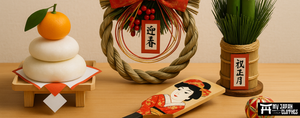
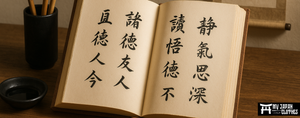


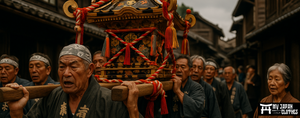
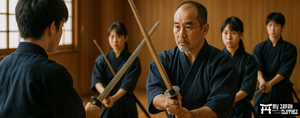


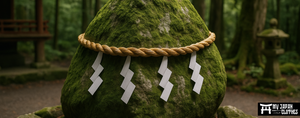
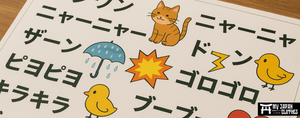
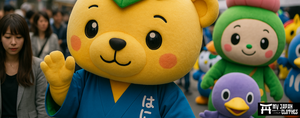
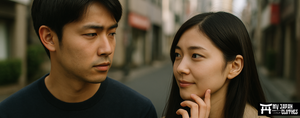
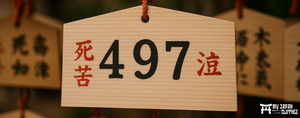
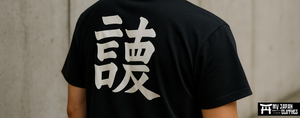
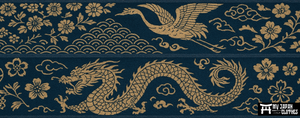
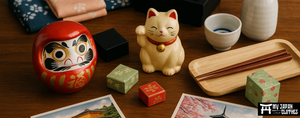




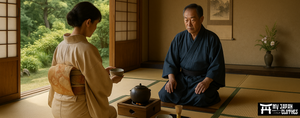
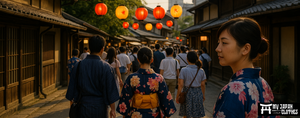
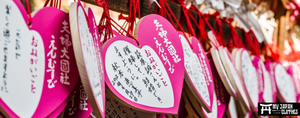
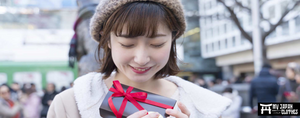

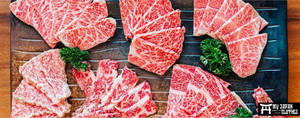
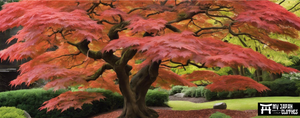
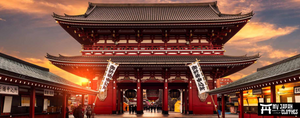
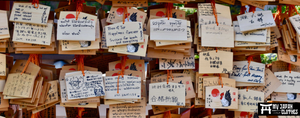

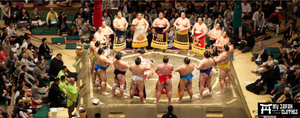

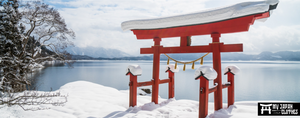





Leave a comment